How to Make Herbal Vitamin C Supplements
Vitamin C is an essential vitamin for preventing colds and other viruses in addition to helping the body detoxify and heal. The herbs in these supplements are a good foundation for natural vitamin C plus substantial antioxidants, other vitamins and minerals to keep you healthy and strong. Learn how to make these 100% natural supplements with no additives for your family.
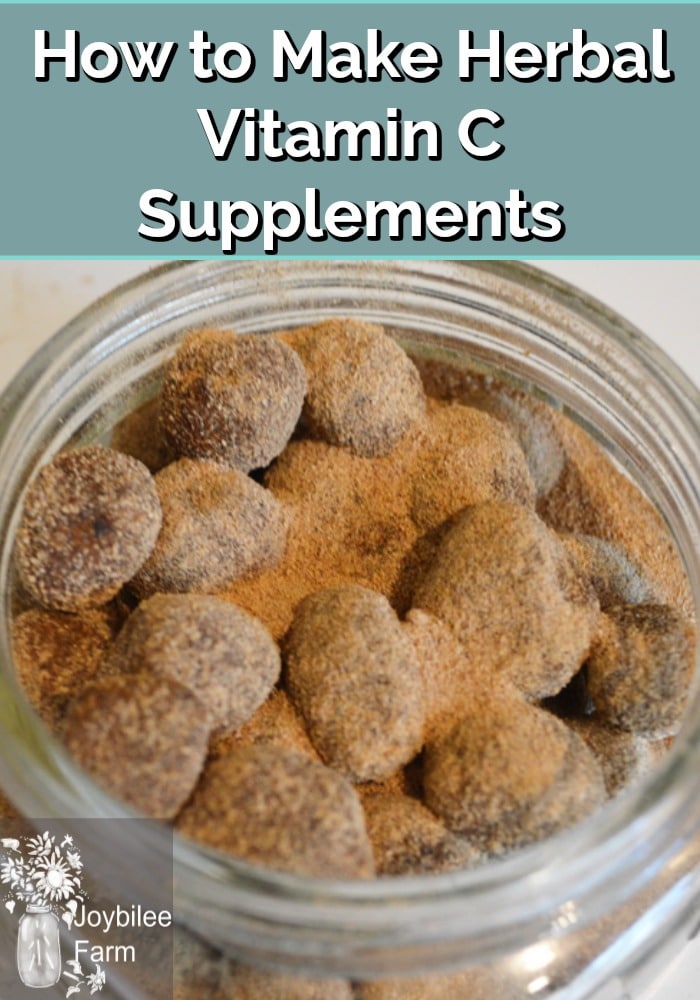
(Updated with new information!)
Vitamin C is an essential vitamin for preventing colds and other viruses and for helping the body detoxify and heal. Without it, we lose our teeth, get skin sores, catch viruses, and eventually die. One would think that store bought vitamin C would offer enough vitamin C benefits, but that’s not proving true. Store bought vitamin C, created in the lab, is synthesized from GM corn syrup, through a complicated chemical process. Once it’s completed the corn syrup becomes ascorbic acid, a white crystalline chemical. While it is called vitamin C, scientists are finding out that our bodies don’t process it in the same way as the natural vitamin C that occurs in fruits and vegetables. For our bodies to process it efficiently we need the flavonoids in real food.
In fact, there are label warnings on this synthetic vitamin C, to protect the consumer from drug interactions. See a few of these warnings here.
Some of these drug interactions apply to synthetic vitamin C, while food based vitamin C is metabolized differently in your body. Nevertheless, check with your doctor before supplementing in large amounts, just to verify what is best in your personal circumstances.
Vitamin C was the one GMO product that was still in my cupboard. Knowing that our bodies need vitamin C and we live in a climate that has 6 months of winter conditions, October to March, I didn’t want to let go of my vitamin C crutch. But I’ve found something better. Something so easy to make and tasty that I won’t need to buy GMO-corn-syrup-made vitamin C again. Of course, I’m sharing the recipe below, but first, let me convince you why you really do need vitamin C and you shouldn’t ignore this post.
Vitamin C benefits
Your body uses vitamin C to:
- Repair tissue
- Grow
- Make collagen to repair and grow skin, cartilage, tendons, ligaments, and blood vessels
- Heal wounds
- Repair bones and teeth
- Boost your immune system and ward off colds and viruses
- Maintain healthy gums and teeth
- Improve your vision
- Reduce inflammation and pain
- Heal burns
- Balance blood sugar
- Support the elimination of toxins
Low levels of vitamin C contribute to:
- Gum inflammation
- Rough, dry scaly skin
- Bruising easily
- Nosebleeds
- Frequent illness
- High blood pressure
- Gall bladder disease
- Stroke
- Heart problems
- Hardening of the arteries
- Plaque build up in the arteries and heart
- Scurvy
Where is vitamin C found?
It’s found in herbs, fruits, and vegetables to varying degrees. But it’s reduced by heat, so when we eat cooked food, we lose some of the available vitamin C. But the good news is that the vitamin C that we get from our food doesn’t have any drug interactions. We can eat it freely.
Any excess vitamin C that we take in is simply peed out, so when we eat our vitamin C in a salad, or bowl of fruit, we can’t eat too much.
Food based vitamin C acts as an antioxidant and free radical scavenger, repairing DNA damage. It prevents premature aging. And you can’t take too much.
Studies have demonstrated that the additional flavonoids in natural vitamin C inhibit the takeup and excretion of vitamin C from the body, which means you need less vitamin C from food sources than you do when relying on synthetic.
The best food sources of vitamin C from your garden or the grocery store
- Red and yellow bell peppers
- Broccoli or cauliflower, raw
- Cabbage, raw
- Kale, raw
- Bitter melon
- Guava
- Papaya
- Kiwi Fruit
- Oranges
- Pineapple
- Avocado
- Strawberries
- Cantaloupe
Grains, milk, meat, and legumes have very little vitamin C. Processed fruit juices and vegetable juices have chemical vitamin C added back in to replace what’s destroyed in processing. For more information about the vitamin C content of common foods see this helpful chart.
The vitamin C content varies from 100 mg / ½ cup serving of raw red peppers to 59 mg. for a medium size orange or 52 mg. for a ½ cup of strawberries. It seems that a person would need to eat 10 to 15 servings of fresh fruits and vegetables to get the equivalent vitamin C found in one 1,000 mg tablet of synthetic vitamin C. When sickness hits we take up to 4,000 mg of vitamin C a day. That seems like a lot of servings of fruits and vegetables. And when you are sick you hardly feel like eating. No wonder people rely on synthetic vitamins. Even if food source vitamin C allowed for a greater bioavailability than synthetic due to the presence of flavonoids, that’s still more than the recommended 5 servings of fruits and vegetables a day. So supplementation, especially in the winter months seems prudent.
Herbs for vitamin C supplementation
Here in Canada, we can’t get enough vitamin C in the winter from our food alone. Vitamin C degrades when fresh vegetables and fruit are put in cold storage. In winter you can’t rely on the vitamin C in grocery store produce.
Thankfully several herbs are significantly high in vitamin C. Depending on where you live, some of them may be growing near you. Whatever you can’t find can be purchased from a reputable herb supplier, your local health food store, or Mountain Rose Herbs, my go-to supplier for fresh, organic herbs.
Acerola (Malpighia emarginata ) is the richest herbal source of vitamin C that is easily available. Acerola is a tropical cherry that grows wild in Mexico, South America, and southern parts of the USA. It is highly perishable so it should be dried immediately after picking. Dried acerola has a vitamin C content of 14,800 mg per 100 grams. It is also a rich source of vitamin A (7,000 IU/100 grams) and Thiamin (1.1 mg/100 grams). (Pederson, p. 181)
Amla, the fruit of the Indian Gooseberry, is another strong source of vitamin C. 100 grams of dried Amla fruit contains 4553 mg of vitamin C. Amla is also a good source of vitamin B complex, vitamin A, calcium, phosphorous, iron, and chromium. See some of the benefits of Amla here. Amla is a bit gritty. If you don’t like the grittiness you can reduce the amla and increase one of the herbs you like better. There are no exact measurements.
Rosehips are the fruit of the rose plant. Wild rosehips from the dog rose or rugosa rose to have about 740mg of vitamin C per 100 grams of dried fruit. If you are harvesting your own rosehips to make vitamin C, it’s important to remove the calyx and the seeds, for easier assimilation. The hairy seeds can cause mouth and stomach irritation. Pederson, p. 147).
Orange peel, the part of the orange that we throw away, has 136 mg of vitamin C as well as being a good source of potassium (1,700 mg/100 grams based on dry weight) (Pederson, Nutritional Herbology: A Reference Guide to Herbs, p.193)
These herbs not only contribute vitamin C and substantial antioxidants, but they also contribute other vitamins and minerals to keep you healthy and strong. And of course, these are real food, not chemicals so you can eat them freely.
There is no way of knowing except by laboratory analysis how much actual vitamin C is in real food. There are too many factors to consider, including growing conditions, length of time from harvest to preservation, and length of time in storage. But these high in vitamin C herbs are a good foundation for natural supplementation. For my family, they defeat the last stronghold of GMOs in our diet.
Herbal vitamin C recipe
(Time: 15 min. Yield: 30 3/4 inch balls)
2 tbsp. Acerola berry powder
1 tbsp. Amla powder
2 tbsp. Rosehip powder
1 tbsp. orange peel powder
2 tbsp. plus 1 tsp. powdered hawthorn berry (improves circulation).
5 tbsp. local raw honey
Method:
Put the first 5 herbs in a small bowl. Pour the honey over the acerola, amla, rosehip, orange peel, and hawthorn berry, one tablespoon at a time. Stir well to incorporate the honey into the herbs.
As you get near the end of stirring the honey into the herbs it will become more difficult. Begin to knead the herbal dough to incorporate the last of the powdered herbs. The dough will be soft and pliable and form a large ball.
Pinch off 3/4 inch bits of the dough (about the length of your thumb from tip to the first joint). Between your thumb and forefinger, roll each piece into a small ball 3/4 inches in diameter. Roll in the hawthorn berry powder. Hawthorn provides antioxidants, improves circulation and is a heart tonic.
Repeat these steps until all the dough is used up and you have about 30 — 3/4 inch balls. Roll each ball in the additional hawthorn powder.
Store these vitamin C supplement “pills” in a wide mouth glass jar in the fridge. Once these are chilled, the texture is firm and chewy.
Dose:
A good rule of thumb is to eat 1 to 2 of these at the beginning of a meal, 3 or 4 times a day to give your body the antioxidants it needs.
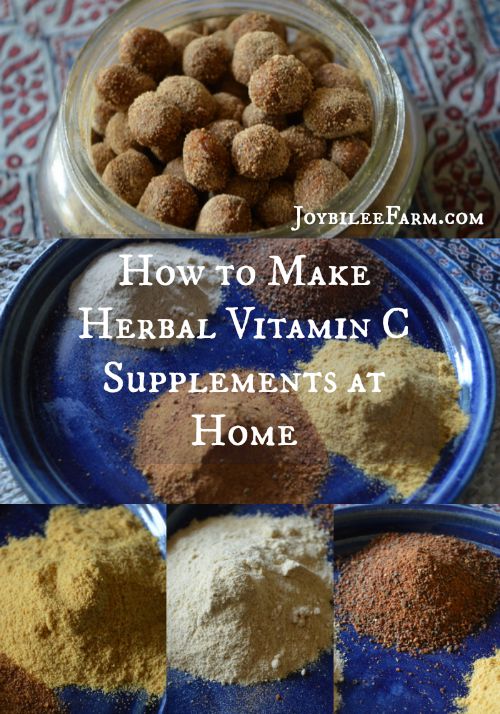
Notes:
This is a folk recipe — there are no exact measurements. Feel free to experiment until you find the flavour exactly to your liking. Acerola cherries are very sour. Amla has a gritty texture. Add more or less as you like to get the flavour and texture you prefer.
I started making this pea size to coax my reluctant family to try them. Now they like them just fine and I’m making them about 3/4″ size. Feel free to experiment and make them the size you prefer.
Like the zoom balls, adapted from Rosemary Gladstar’s recipe — the bigger size seems like a treat rather than “medicine.” And your heart will love them, with their high anti-oxidant ingredients.
Cautions:
These are nutritive and antioxidant, although just like when you eat too many cherries or strawberries they can cause stomach upset or diarrhea if you overindulge. Eat less if you experience discomfort.
If you are on prescription medication or have other chronic health issues get professional advice about your personal health needs, before adding herbs to your diet.
Children under 1 year of age should get their vitamin C from the foods their mothers eat, through breastfeeding. Don’t feed these to children under 1 year of age, due to the presence of raw honey. Children under 3 years of age should be supervised when chewing, to avoid choking.
Where to buy the herbs for this recipe
I purchased my herbs for this recipe from Mountain Rose Herbs. A quarter pound each of Acerola, Amla, rosehip powder, and orange peel powder will give you ample ingredients for several batches of this recipe. While Hawthorn berry isn’t a vitamin C rich herb, it is a good herb for heart health and improved circulation. It adds additional antioxidants to this blend. If you made my zoom ball recipe, you’ll remember that I add hawthorn to everything. I buy my powdered hawthorn berries in 1 pound packages.
I recommend buying powdered herbs for this. If you have to grind the herbs yourself, take care not to overheat the herbs as you are grinding them, to preserve the vitamin C. Your home powdered herbs may not be as finely pulverized as the powdered herbs available from Mountain Rose Herbs.
Keep the unused portion of each powdered herb in a sealed bag or glass jar, in a cool, dry place away from light and heat.
Mountain Rose Herbs is often “out of stock” on popular herbs, due to supply chain issues. If you can’t find what you need locally to make this recipe and Mountain Rose is out of stock. Substitute more of what you can find. This recipe is just a guide. The ingredients are real food. Don’t stress. Just make it.
Update:
Dr. Mercola has an informative article on the latest research in the association between increased vitamin C intake and improvement in heart health measures. Regular supplementation with vitamin C improves dilation of blood vessels resulting in a lowering of mortality in heart disease and better coronary blood flow. Hawthorn, another heart herb, and vitamin C seem like a great team!
Shared on:
Find another version of Vitamin C balls by Rosalee de la Forêt at Learning Herbs


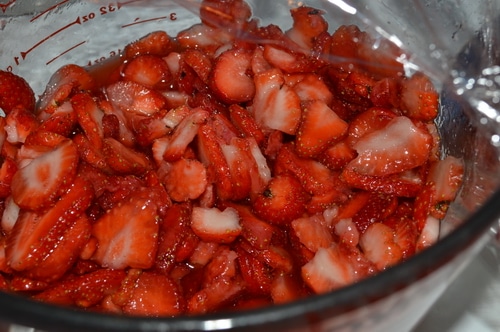
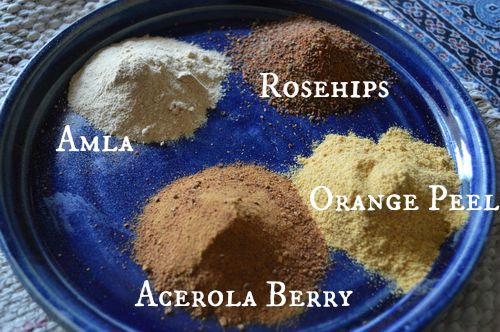
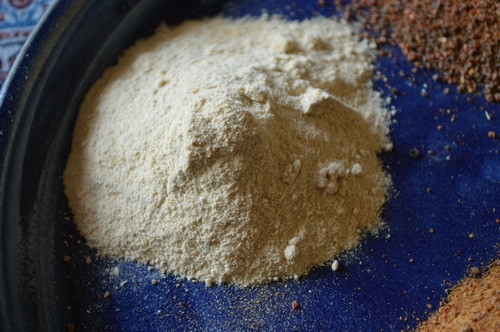
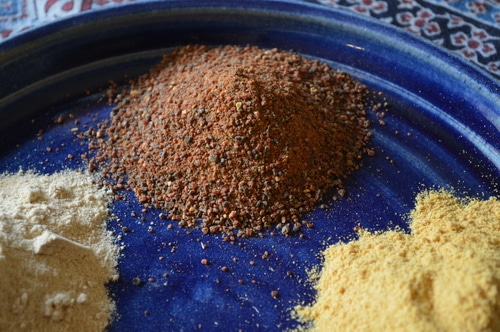
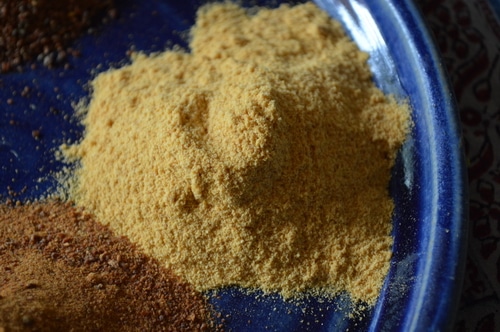
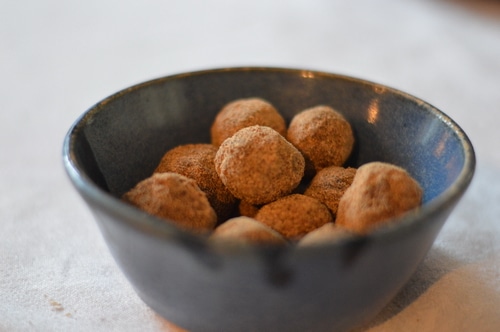

I hope you didn’t throw it away. You just need to add more powdered herbs to get the right consistency. Your honey may have been more liquid than my honey. Or your humidity might be higher. But you can keep adding powdered rosehips, or orange or another vitamin C rich herb powder until you get the consistency of a stiff dough. Give it a try.
Hi I tried to make this recipe per your instructions but ended up with a watery gooey mess that I couldn’t do anything with but to throw away. I hated to waste money on these somewhat expensive ingredients to just throw away. Is there some other ingredient missing? Plus don’t see how it would make 30 pills with the small watery gooey mess that I ended up with. . Good concept just don’t understand how to make it work.♀️
Sure. Or you could mix the powders in a smoothie.
I’m wondering if there a reason I couldn’t just mix the herbs and refrigerate the powder and eat it that way instead of mixing in the honey? I know the original recipe might help to get reluctant family members to eat it but I would be making it for myself. Could this be used for a tea?